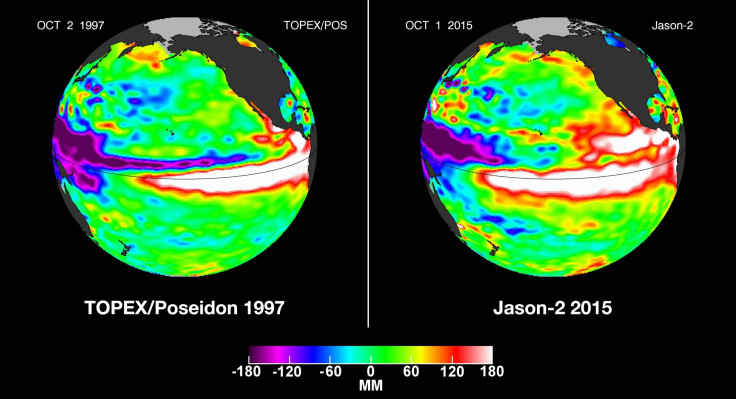El Niño 2015 From Space: Satellites And A Supercomputer Will Be Quite Busy This Winter

A strong El Niño is predicted for this winter, but the weather phenomenon affects a lot more than temperatures. El Niño can influence precipitation, forest fires across continents and fishing industries around the seas. Luckily, NASA is up to the task of tracking El Niño with a slew of Earth-observing satellites.
El Niño 2015 is expected to rival the mighty 1997 event that led to severe flooding, tornadoes and other extreme weather across the U.S. The 2015 event may be among the strongest on record, but NASA and the National Oceanic and Atmospheric Administration are busy monitoring El Niño using a fleet of satellites. The Ocean Surface Topography Mission on the Jason-2 satellite will be one of the workhorses the space agency relies on this winter.
Jason-2, launched in 2008, has the formidable task of monitoring Earth's oceans. The satellite measures changes in sea surface height, which can be used to track events like El Niño. Jason-2's ability to measure how oceans store heat is also important in tracking El Niño. Other satellites, like the Global Precipitation Measurement Mission and the Soil Moisture Active Passive mission, can monitor precipitation and surface-level moisture.
"El Niño is a fascinating phenomenon because it has such far-reaching and diverse impacts. The fact that fires in Indonesia are linked with circulation patterns that influence rainfall over the United States shows how complex and interconnected the Earth system is,” Lesley Ott, research meteorologist at NASA’s Goddard Space Flight Center, said in a statement.
This year's event will be closely monitored for potential drought relief in California. Wetter-than-average predictions may somewhat relieve the worst drought in centuries, but there is concern about flash floods and landslides caused by the extra rain.
NASA will crunch all the data collected by satellites with a supercomputer to create modeling systems to analyze El Niño. The new insights could help researchers better understand global weather systems and future events like El Niño and La Niña.
© Copyright IBTimes 2024. All rights reserved.






















